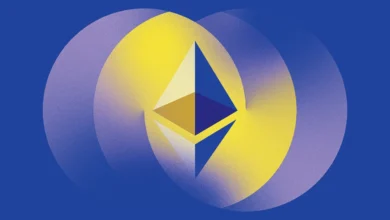Solana vs Ethereum Investment Comparison Which Crypto Offers Better Returns in 2025

The cryptocurrency landscape continues to evolve rapidly, with two blockchain platforms standing out as major investment opportunities: Solana and Ethereum. For investors seeking to understand the Solana vs Ethereum investment comparison, the decision between these two powerhouse cryptocurrencies requires careful analysis of multiple factors, including technology, market performance, adoption rates, and future potential.
Both Solana (SOL) and Ethereum (ETH) have demonstrated remarkable growth trajectories, yet they represent fundamentally different approaches to blockchain technology and investment opportunities. Ethereum, as the established leader in smart contracts and decentralized applications, offers stability and proven market dominance. Meanwhile, Solana presents itself as a high-performance alternative with faster transaction speeds and lower costs, attracting developers and users seeking efficiency.
Understanding the Fundamentals: Solana vs Ethereum Investment Comparison
Ethereum: The Established Giant
Ethereum launched in 2015 and has since become the backbone of decentralized finance (DeFi) and non-fungible tokens (NFTs). As the second-largest cryptocurrency by market capitalization, Ethereum has proven its resilience through multiple market cycles and technological upgrades.
The platform’s transition to Ethereum 2.0, implementing a proof-of-stake consensus mechanism, has significantly improved its energy efficiency and scalability. This upgrade represents a crucial factor in any Solana vs Ethereum investment comparison, as it addresses many of Ethereum’s historical limitations while maintaining its dominant market position.
Ethereum’s investment appeal stems from its established ecosystem, with over $50 billion locked in DeFi protocols and thousands of decentralized applications (dApps) built on its network. The platform hosts major projects like Uniswap, Compound, and OpenSea, creating a comprehensive ecosystem that generates substantial network value.
Solana: The High-Performance Challenger
Solana emerged in 2020 with a revolutionary approach to blockchain scalability, utilizing a unique proof-of-history consensus mechanism combined with proof-of-stake. This innovative architecture enables Solana to process over 50,000 transactions per second with sub-second finality and minimal fees.
From an investment perspective, Solana’s rapid growth trajectory has been impressive. The platform has attracted significant venture capital funding and developer adoption, with major projects like Serum, Raydium, and Magic Eden choosing Solana as their foundation.
The network’s focus on speed and cost-effectiveness has made it particularly attractive for high-frequency trading applications, gaming, and consumer-facing dApps that require seamless user experiences. This positioning creates unique investment opportunities within the broader Solana vs Ethereum investment comparison framework.
Market Performance Analysis: ROI and Price Trends
Historical Performance Comparison
When analyzing the Solana vs Ethereum investment comparison from a historical returns perspective, both cryptocurrencies have delivered substantial gains for early investors, though with different risk-reward profiles.
Ethereum’s price journey from under $1 in 2015 to peaks above $4,000 represents one of the most successful investment stories in cryptocurrency history. The platform’s steady growth, punctuated by significant bull runs, has provided investors with multiple entry and exit opportunities while maintaining relatively stable long-term appreciation.
Solana’s price performance has been more volatile but potentially more rewarding for timing-sensitive investors. From its launch price of around $0.50 to peaks exceeding $250, SOL has demonstrated explosive growth potential. However, this performance has come with increased volatility and higher risk factors that investors must carefully consider.
Market Capitalization and Liquidity
Market capitalization serves as a crucial metric in any Solana vs Ethereum investment comparison. Ethereum maintains a significantly larger market cap, typically ranging between $200-400 billion depending on market conditions. This larger capitalization provides greater stability and liquidity for institutional investors.
Solana’s market cap, while smaller at approximately $20-60 billion, offers potentially higher growth multiples. Smaller market caps often translate to greater price volatility but also increased upside potential for investors willing to accept higher risk levels.
Liquidity considerations favor Ethereum due to its longer market presence and broader exchange availability. Ethereum trading pairs exist on virtually every cryptocurrency exchange, providing superior liquidity for large transactions and institutional trading strategies.
Technology and Scalability: Investment Implications

Ethereum’s Technological Foundation
Ethereum’s technology stack has evolved significantly since its inception, with recent upgrades addressing scalability and energy consumption concerns. The implementation of Ethereum 2.0 introduces sharding and proof-of-stake consensus, dramatically improving transaction throughput and reducing environmental impact.
Layer 2 solutions like Polygon, Arbitrum, and Optimism have further enhanced Ethereum’s scalability while maintaining security and decentralization. These developments strengthen Ethereum’s position in any comprehensive Solana vs Ethereum investment comparison by addressing historical performance limitations.
The Ethereum Virtual Machine (EVM) compatibility has created a vast ecosystem of development tools, making it easier for developers to build and deploy applications. This technological maturity translates to investment stability and continued ecosystem growth.
Solana’s Innovation Advantage
Solana’s technological architecture represents a paradigm shift in blockchain design, combining multiple consensus mechanisms to achieve unprecedented performance levels. The proof-of-history mechanism creates a verifiable passage of time, enabling faster transaction processing without sacrificing security.
The platform’s single-layer architecture eliminates the complexity associated with Layer 2 solutions, providing developers with a more straightforward development environment. This simplicity has attracted numerous projects seeking high-performance blockchain infrastructure.
Solana’s focus on parallel processing and optimized validator hardware requirements creates a technological foundation that could support mass adoption applications. This technological advantage represents a significant factor in the long-term Solana vs Ethereum investment comparison.
Ecosystem Development and Adoption Rates
Ethereum’s Mature Ecosystem
Ethereum’s ecosystem maturity provides substantial investment security through diversified use cases and established protocols. The platform hosts the majority of DeFi protocols, with total value locked (TVL) consistently exceeding $30 billion across various applications.
The NFT market’s explosive growth has primarily occurred on Ethereum, with platforms like OpenSea, SuperRare, and Foundation driving billions in trading volume. This dominance in digital collectibles creates sustained demand for ETH tokens and network usage.
Enterprise adoption of Ethereum continues expanding, with major corporations like JPMorgan, Microsoft, and ConsenSys building enterprise-grade solutions on Ethereum infrastructure. This institutional adoption provides long-term investment stability and growth potential.
Solana’s Rapid Growth Trajectory
Solana’s ecosystem development has accelerated rapidly, with over 400 projects building on the platform across DeFi, NFTs, gaming, and Web3 applications. The Solana Foundation’s grant programs and hackathons have fostered innovation and developer adoption.
The platform’s gaming ecosystem has shown particular promise, with projects like Star Atlas, Aurory, and Genopets choosing Solana for its high-performance capabilities. Gaming represents a potentially massive market opportunity that could drive significant adoption and investment returns.
Solana’s mobile strategy, including the Saga smartphone and mobile wallet integration, demonstrates innovative approaches to cryptocurrency adoption. These initiatives position Solana uniquely in the consumer market segment of the Solana vs Ethereum investment comparison.
Investment Risks and Considerations
Ethereum Risk Factors
Despite its market leadership, Ethereum faces several investment risks that potential investors must consider. Network congestion during high-demand periods can lead to extremely high gas fees, potentially limiting adoption and user experience.
Competition from alternative smart contract platforms poses ongoing risks to Ethereum’s market dominance. While Ethereum maintains a first-mover advantage, technological innovations from competitors could erode market share over time.
Regulatory uncertainty surrounding cryptocurrency and DeFi applications could impact Ethereum’s growth trajectory. Changes in regulatory frameworks may affect the platform’s utility and investment attractiveness.
Solana Investment Risks
Solana’s investment profile includes several risk factors that investors must carefully evaluate. The platform’s relative newness means less battle-tested infrastructure and potential unknown vulnerabilities or bugs.
Network outages have occurred multiple times in Solana’s history, raising concerns about reliability and decentralization. These technical issues could impact investor confidence and long-term adoption rates.
The concentration of SOL tokens among early investors and the Solana Foundation creates potential selling pressure that could affect price stability. Token distribution patterns represent an important consideration in the Solana vs Ethereum investment comparison.
Future Outlook and Investment Potential
Ethereum’s Long-term Prospects
Ethereum’s future investment potential remains strong due to continued protocol improvements and ecosystem expansion. The ongoing implementation of Ethereum 2.0 features, including full sharding, will further enhance scalability and reduce transaction costs.
The platform’s established position in institutional DeFi and enterprise blockchain applications provides sustained demand drivers. As traditional finance continues to adopt blockchain technology, Ethereum’s mature ecosystem positions it advantageously for institutional investment flows.
Ethereum’s roadmap includes ambitious upgrades that could significantly impact its investment value. Proto-danksharding, account abstraction, and continued Layer 2 development represent catalysts for future growth and adoption.
Solana’s Growth Catalysts
Solana’s investment future depends largely on its ability to maintain technological advantages while building ecosystem depth. The platform’s performance capabilities position it well for next-generation applications requiring high throughput and low latency.
The growing focus on mobile and consumer applications could provide Solana with unique market positioning. As cryptocurrency adoption moves beyond trading into everyday applications, Solana’s user experience advantages may drive significant growth.
Institutional adoption of Solana continues expanding, with major exchanges, trading firms, and institutional investors recognizing its technological benefits. This institutional interest could drive substantial investment inflows and price appreciation.
Portfolio Allocation Strategies
Diversified Crypto Investment Approach
When considering the Solana vs Ethereum investment comparison within a portfolio context, diversification strategies often prove most effective. Allocating investments across both platforms allows investors to benefit from Ethereum’s stability while capturing Solana’s growth potential.
A common allocation strategy involves weighting Ethereum more heavily due to its established market position and lower volatility profile. Many investors allocate 60-70% of their smart contract platform investments to Ethereum while dedicating 30-40% to higher-risk, higher-reward alternatives like Solana.
Risk tolerance and investment timeline significantly influence optimal allocation strategies. Conservative investors may prefer Ethereum’s established ecosystem, while growth-oriented investors might favor Solana’s higher potential returns despite increased volatility.
Dollar-Cost Averaging Considerations
Dollar-cost averaging strategies can effectively manage volatility in both Solana and Ethereum investments. Regular, smaller purchases help smooth price fluctuations and reduce timing risk in volatile cryptocurrency markets.
The Solana vs Ethereum investment comparison suggests different dollar-cost averaging approaches for each platform. Ethereum’s larger market cap and higher liquidity make it suitable for larger, more frequent purchases, while Solana’s higher volatility may benefit from more measured accumulation strategies.
Market timing considerations remain important even with dollar-cost averaging approaches. Understanding market cycles, network upgrades, and ecosystem developments can help optimize entry points and investment sizing decisions.
Technical Analysis and Market Indicators

Price Action and Trading Patterns
Technical analysis provides valuable insights for the Solana vs Ethereum investment comparison, revealing different trading characteristics and market behaviors. Ethereum typically exhibits more stable price patterns with clearer support and resistance levels due to its larger market capitalization and trading volume.
Solana’s price action tends to be more volatile, with sharper moves in both directions. This volatility creates opportunities for active traders but requires more sophisticated risk management strategies for long-term investors.
Volume analysis shows Ethereum maintaining consistently higher trading volumes across multiple exchanges, indicating superior liquidity and institutional participation. Solana’s trading volume, while growing, remains more concentrated among retail traders and smaller institutional participants.
On-Chain Metrics and Network Activity
On-chain analysis reveals important differences between Solana and Ethereum that impact investment decisions. Ethereum’s network activity demonstrates steady growth in active addresses, transaction volume, and DeFi participation, indicating healthy ecosystem development.
Solana’s on-chain metrics show rapid growth in developer activity and application deployment, suggesting strong ecosystem momentum. However, the platform’s shorter operating history provides less historical data for comprehensive trend analysis.
Network fees and usage patterns provide additional investment insights. Ethereum’s higher fees during congestion periods indicate strong demand but potential usability constraints. Solana’s consistently low fees attract users but raise questions about long-term sustainability and validator economics.
Regulatory Environment and Compliance
Regulatory Clarity and Investment Impact
The regulatory landscape significantly influences the Solana vs Ethereum investment comparison, with both platforms facing evolving regulatory scrutiny. Ethereum’s longer operational history and established ecosystem provide some regulatory clarity, though specific DeFi and staking regulations remain uncertain.
Solana’s regulatory position remains less defined due to its shorter market presence and unique technical characteristics. The platform’s high-performance capabilities and focus on consumer applications may attract different regulatory attention compared to Ethereum’s established DeFi ecosystem.
Securities law considerations affect both platforms, particularly regarding staking rewards and token distribution mechanisms. Investors must monitor regulatory developments that could impact the legal status and investment attractiveness of both SOL and ETH tokens.
Also Read: Altcoins vs Stablecoins: Major Differences 2024
Institutional Adoption and Compliance
Institutional investment flows increasingly influence cryptocurrency markets, making compliance and regulatory clarity crucial factors in the Solana vs Ethereum investment comparison. Ethereum’s established position in institutional portfolios provides investment stability and continued demand support.
Solana’s institutional adoption continues growing, with major exchanges and trading firms integrating SOL into their offerings. However, institutional preference for established, compliant platforms may initially favor Ethereum in traditional finance adoption.
Compliance infrastructure development varies between platforms, with Ethereum benefiting from mature institutional service providers and custody solutions. Solana’s ecosystem must continue developing institutional-grade infrastructure to compete effectively for institutional investment flows.
Conclusion
The Solana vs Ethereum investment comparison reveals two compelling but different cryptocurrency investment opportunities. Ethereum offers established market leadership, proven ecosystem stability, and institutional adoption, making it suitable for conservative crypto investors seeking exposure to blockchain technology’s growth.
Solana presents a high-performance alternative with innovative technology, rapid ecosystem development, and significant growth potential. While carrying higher risks due to its newer market presence, Solana’s technological advantages and expanding adoption create compelling investment opportunities for growth-oriented investors.




